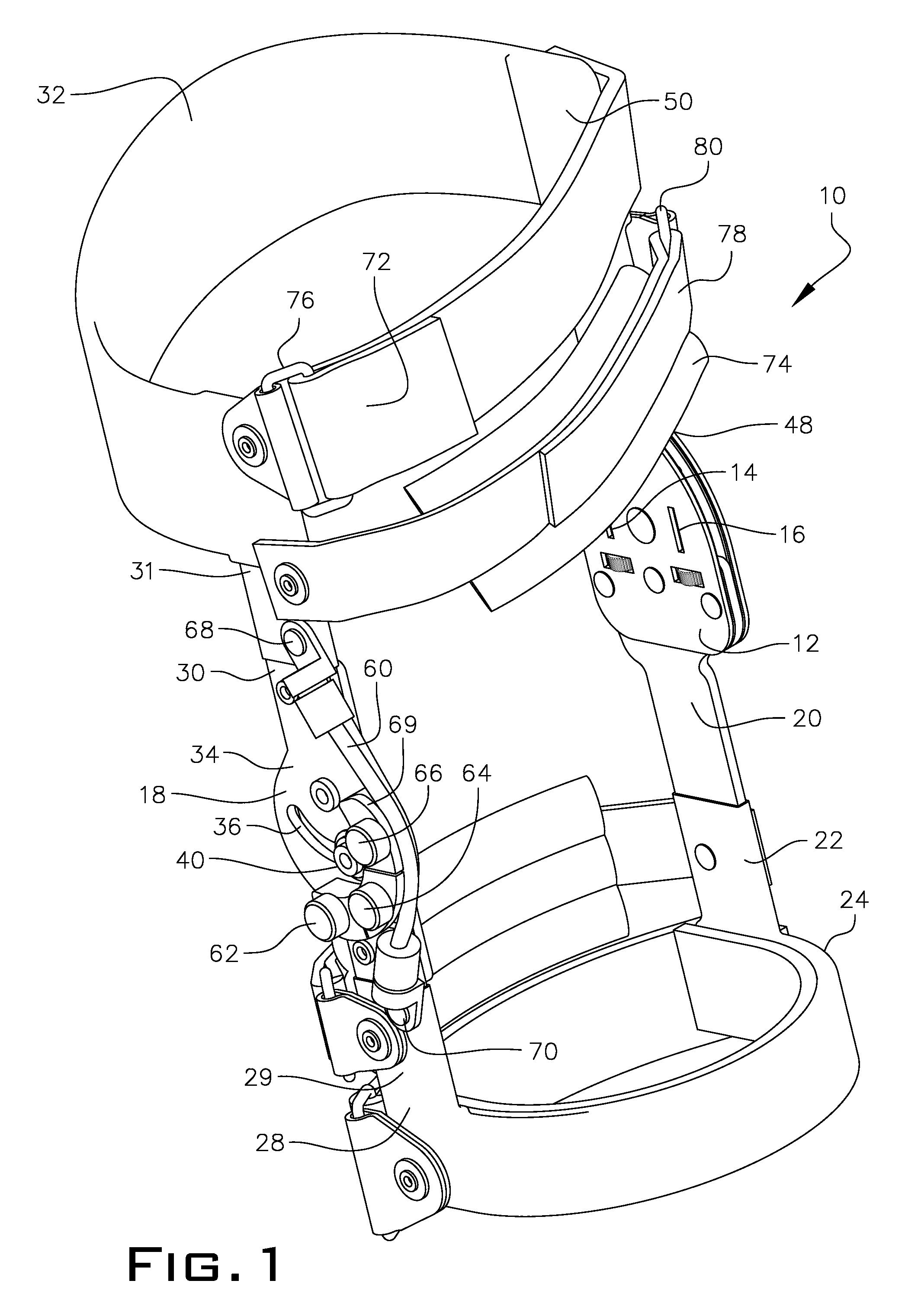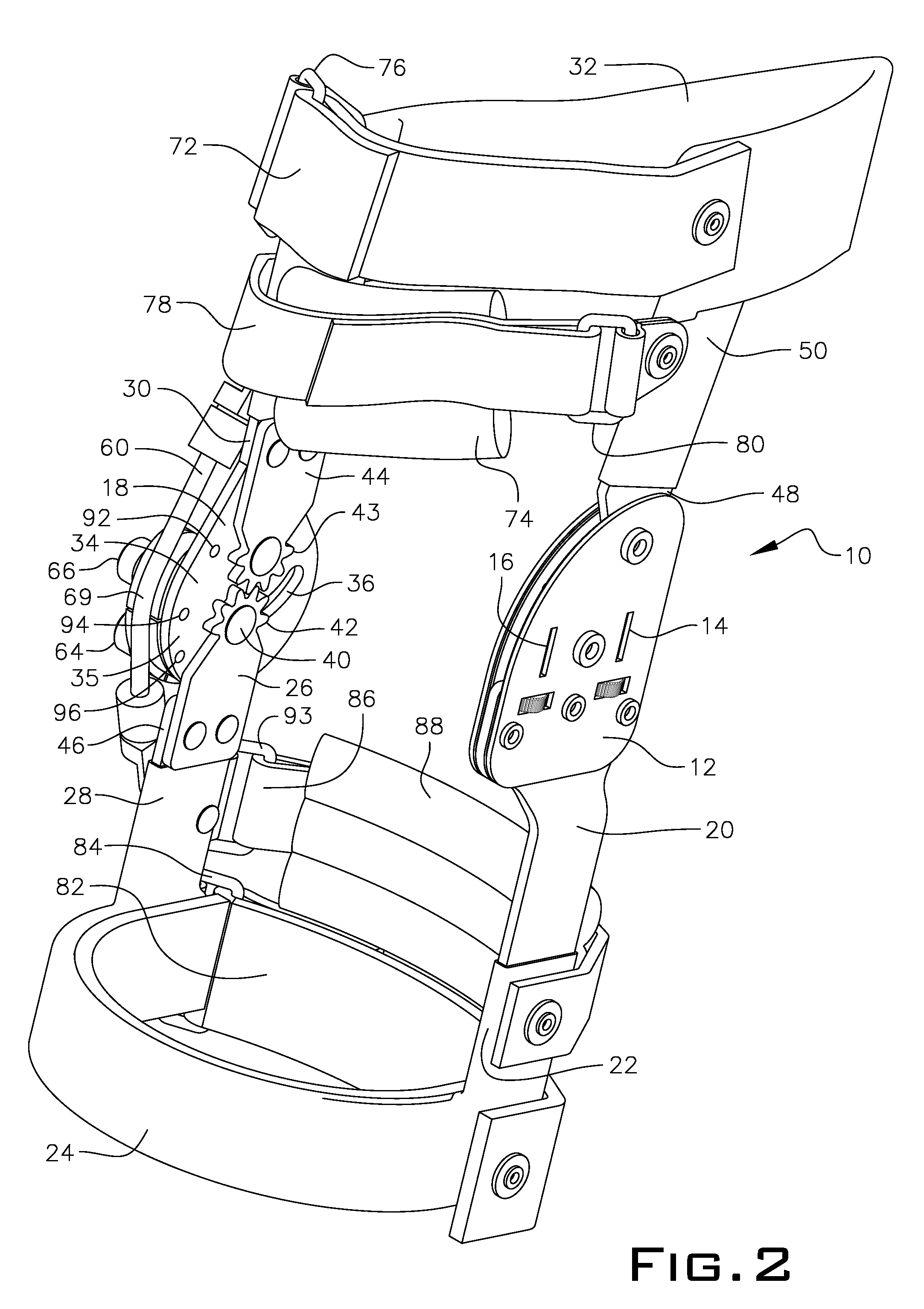Repetitive use of a joint, such as the knee, over the years, which by the way is simply unavoidable and in fact is wholly necessary for normal human function, irritates and inflames the
cartilage, thereby causing
joint pain and swelling.
In advanced cases, there is a total loss of the
cartilage cushion between the
femur and
tibia bones at the knee joint, leading to diminished joint space on one or more affected sides of the knee resulting in pain and limitation of
joint mobility.
Inflammation of the
cartilage can also stimulate new bone outgrowths (also known as “
bone spurs”) to form around the joints causing increased pain and further joint
inflammation thereby exacerbating the condition to a point where many people can barely walk, or if do so, is done with an extreme amount of pain.
However, as noted above, the
surgery is expected to last only about 10 to 20 years because of the typical life of the artificial components used to correct the knee joint.
As such, younger patients are often not considered good candidates for this
surgery.
Other OA patients simply cannot afford
total knee replacement surgery and may be poor candidates for other health reasons.
These patients badly need new technology in OA bracing that provides
rehabilitation of the OA knee and a
delay to OA progression.
With
irritation of the joint,
bone spurs can form causing bits of bone and cartilage to break off which float inside the joint space further irritating the knee and causing addition discomfort and paid.
The knee then becomes imbalanced, with the knee bowing outwardly.
Without
proper treatment, which should include a corrective and therapeutic force
system incorporated into an OA brace to correct an abnormal
gait, OA progression in a patient can lead to a
pathological OA condition, which will most likely force the patient into the necessary, but highly undesirable and expensive, surgical
knee joint replacement.
Further, “regular” abnormal
gait, let alone
pathological OA gait, causes an abnormal swinging of the hips and can result in more severe problems for the patient by placing abnormal stress and force on the hip joints, which if left unchecked or untreated will most often lead to a secondary condition for the patient of osteoarthritis of the hip.
Besides the physical pain associated with medial compartmental degeneration, OA of the knee can cause the patient to feel awkward, inadequate and embarrassed from this abnormal gait, which can then lead to an even more sedentary and reclusive lifestyle, which can further lead to aggravated psychological conditions, such as depression.
Secondly, most OA knee
orthotics or braces are designed to prevent the “bone-on-bone” contact of the
femur and
tibia bones in the medial and / or lateral compartment of the knee joint as the patient bares weight
during ambulation.
When these prior art braces are removed however, little or no rehabilitation of the knee occurs and a return of the pain without brace use is apparent.
Further, none of the OA braces in the prior art work to correct
walking gait kinetics to an actual or more “
normal gait.” In fact, while the prior art devices may assist in straightening the leg somewhat, the patient will still be seen striking the foot along an outside edge on a varus
deformity (bowlegged) condition and on an inside edge on a
valgus deformity (knock-kneed) condition.
This is because none of the prior art devices use a corrective and therapeutic force
system in
coincidence with the OA brace to return the patient to a true, more
normal gait wherein actual
heel-to-
toe striking along the ground surface is realized along with a lengthening of the leg step.
Further, none of the prior art devices use a corrective and therapeutic force
system in combination with a swing-assist system that forces activation of atrophied muscles, such as the quadriceps, which actually rehabilitates the effected area and encourages these atrophied muscles, through recruitment, to begin to work again, thereby assisting the patient to return to the closest, more
normal gait as possible based upon the severity and progression of their specific
disease condition.
None of the prior art OA braces actually rehabilitate and strengthen the leg musculature, with any significance, such that after several months of routine brace use, there is a significant less amount pain when walking or standing or when not using the brace as compared to the pain experienced prior to brace use.
However, it is difficult to set the desired degrees of flexion and extension in such devices and therefore these devices are known to fall short of providing a close-to-complete alleviation of the pain and discomfort from osteoarthritis and a return to normal
walking gait, let alone providing any a corrective and therapeutic force system to rehabilitate the effected knee joint and surrounding muscles.
Further, patient discomfort and brace slippage is a real and common problem with braces designed as such.
However, none of these prior art devices disclose, teach or suggest the use of
cushion pads, let alone
inflatable or pneumatic bladders to apply an additional corrective or therapeutic force to rehabilitate the knee joint and surrounding muscles through forced work and recruitment.
Still further, none disclose a system that works in
coincidence with the corrective or therapeutic forces to equally distribute said forces.
Still further, although many of the existing
knee braces containing locking hinge assemblies serve their intended purpose, difficulty in ease of setting the desired degrees of flexion and extension continues to be a problem, which clearly needs improvement.
 Login to View More
Login to View More  Login to View More
Login to View More 


